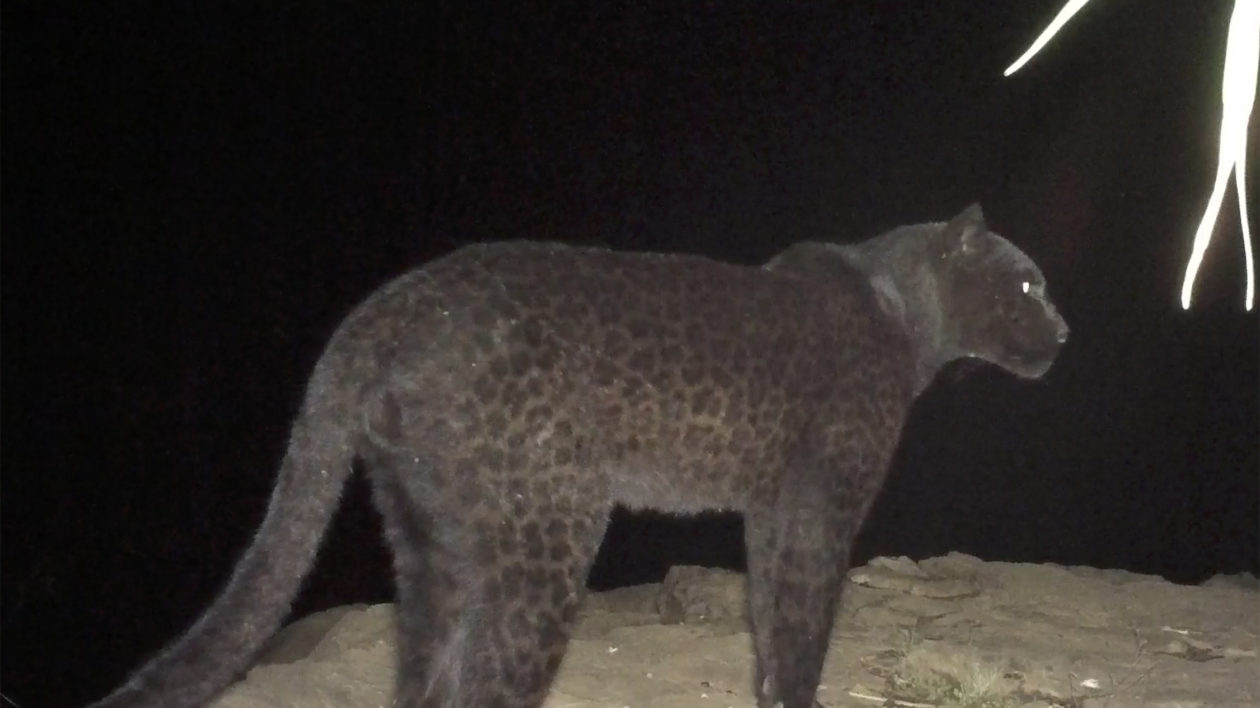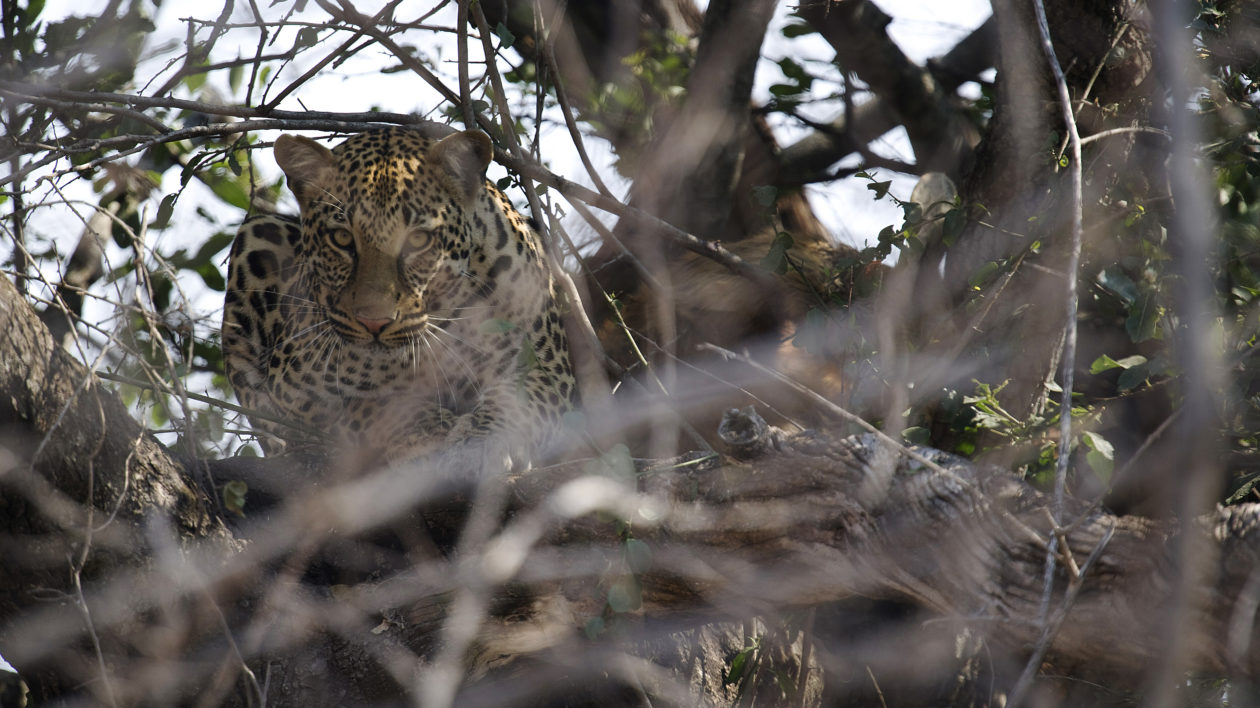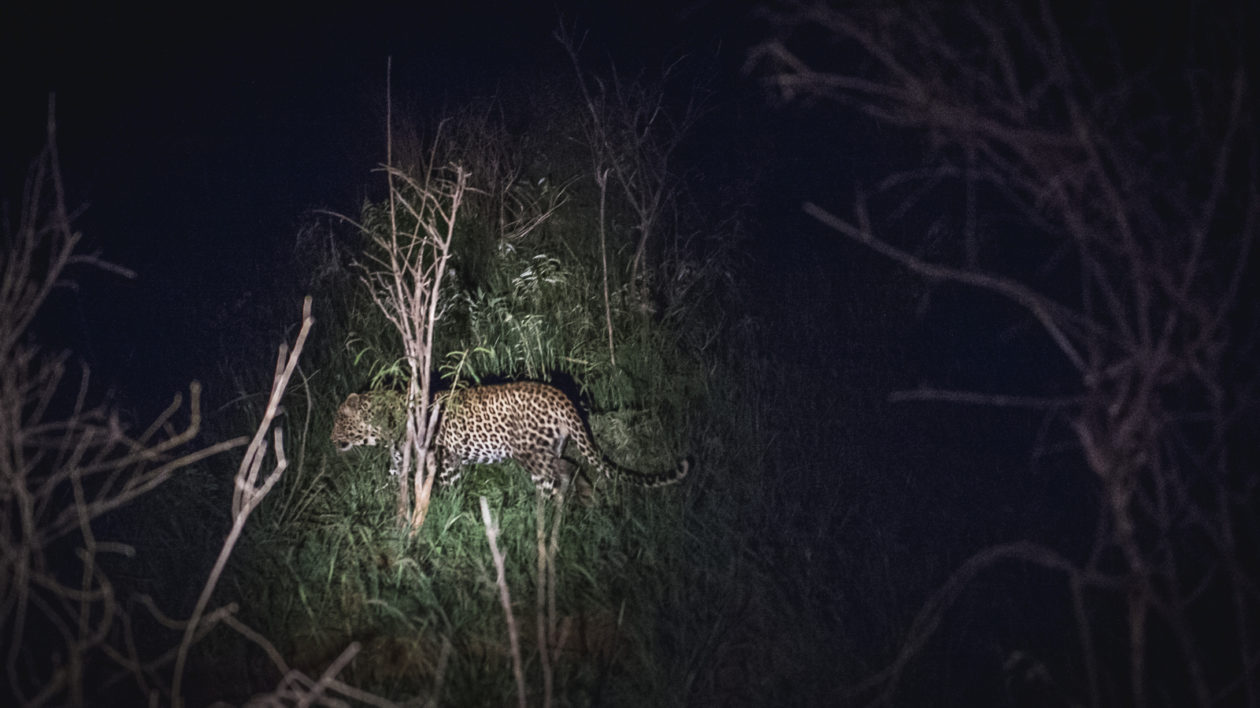Recently, scientific confirmation of a black leopard in Kenya became a global news sensation. The “black panther” (as these leopards are also known) is indeed a striking beast, as the video trail camera footage attests.
The melanistic leopards were filmed in Lorok, Laikipia County, Kenya on remote cameras that were set up as part of a large-scale study aimed at understanding the population dynamics of leopards in Mpala and Loisaba Conservancies.
The story of the black leopard is more than just a story about a cool creature. It’s also a story of community, conservation and coexistence. And it’s a story that’s still unfolding.
In fact, just this week scientists from San Diego Zoo Global have confirmed that these black leopards range into Loisaba Conservancy, a project The Nature Conservancy helped secure.
“We always expected that the black panthers in our study ranged across several conservancies in Laikipia,” says Dr. Nicholas Pilfold, scientist for San Diego Zoo Global. “It is very exciting that we are now starting to observe their movements through our network of remote cameras.”

Caught on Camera
San Diego Zoo Global, working with partners including The Nature Conservancy, launched an initiative to track and research leopards at Loisaba and Mpala Conservancies in Northern Kenya. The research was aimed at understanding the natural history of leopards as well as their population in the area.
“Leopards have actually been largely ignored,” says Pilfold.
While the African leopard population has been decreasing, the extent of this decline remains unknown. Ambrose Letoluai grew up in Koija, bordering the Loisaba Conservancy, and knows well some of the challenges facing leopards. The leopards often killed sheep and goats owned by local residents.
“Leopards were not well liked in local communities,” he says.
Letoluai was supported by the Loisaba Conservancy through a scholarship in high school and college. After an internship, he joined the leopard conservation program as a research assistant.
One of his tasks was visiting local communities to understand predation on livestock. These interviews led to mitigation strategies to help people better coexist with large predators. Such strategies included the use of cell phones to report predation conflicts, direct monitoring of livestock corrals with remote cameras and an upcoming implementation of predator deterrents.

Part of Letoluai’s interviews involved showing community members photos of lions, leopards and cheetahs to better understand what predators they most frequently encountered.
“As people looked at the photos, they said ‘there is one that looks like a leopard but is black,’” Letoluai says. “I recalled that elders in my community talked about black leopards being on the Laikipia Plateau.”
The researchers set out camera traps and obtained footage of black leopards. It was the first scientifically confirmed black leopard in Africa since 1909, when one was documented in Ethiopia. It was the first documentation of a black leopard in Kenya. Scientific documentation requires not only sufficient evidence, but also publication in a peer-reviewed journal.
“People here knew black leopards existed,” says Letoluai. “They have been here for a long time. All we have done is scientifically establish a fact that local people already knew.”
There has been some confusion in the media as to what a scientific confirmation entails. Nicholas Pilfold describes it as such: A sighting means an animal is spotted in the wild, a description is available, but the quality may or may not be good enough to accurately determine the species. Photographic evidence means an animal is photographed in the wild, but the quality may or many not be good enough to accurately determine the species.
Scientific documentation requires photos and descriptions of behavior and body feature to such a high level that they can be passed through peer-reviewed assessment by other scientists to establish species.
The infrared trail cameras captured very high-quality images that showed the rosette patterns (what many know as the leopard’s spots). While a melanistic leopard appears completely black in the daytime, the rosettes show clearly with infrared photography at night. The observations were published in the African Journal of Ecology.
The ongoing trail camera project has captured images of two melanistic leopards, a young female and an adult male. While the researchers continue to track these animals, many questions remain.

What Is A Black Leopard?
Melanism is a gene mutation caused by over-production of pigment, making the animal appear black in daytime. Since it’s a recessive gene, it has to be carried by both parents.
Leopards were once a widespread species throughout Africa and Asia, and of the current remaining populations, about 11 percent of all leopards are estimated to be melanistic. However, this trait is not distributed evenly among the population. As many as 95 percent of leopards on the Malayan Peninsula are melanistic. In African leopards, the trait is rare.
The presence of black leopards on the Laikipia Plateau in Kenya calls into question a previous hypothesis of melanism in the species.
“Black panthers are typically found in heavily shaded environments like tropical forests,” says Pilfold. “The hypothesis was that black leopards were better camouflaged in such environments. But there is not a lot of dense forest in Laikipia. It raises questions about how they survive in this more-open habitat.”

One possibility is that these leopards are dispersing from Kenya’s Aberdare Mountains, an environment that does consist of denser forest. But that has not yet been verified by genetic analysis.
San Diego Zoo Global continues to expand its leopard research program, and is also tracking giraffes, another large, charismatic and declining species that is under-studied.
Researchers believe the attention towards black leopards could help support conservation efforts in Kenya. “It could create interest in tourism for these conservancies,” says Letoluai. “In order to support these cats, we need to support these conservancies. And people can do that through responsible tourism.”
Chantal Migongo-Bake, project officer for The Nature Conservancy in Africa, agrees.
“We are very supportive of the important work San Diego Zoo Global is carrying out to benefit leopards and giraffes,” she says. “These two species are important to the ecosystem and important species for tourism as well. They are also two species we don’t know a lot about. Understanding wildlife not only benefits conservation, but also the local communities that live with these species.”




I grew up in the Aberdare Ranges, there were plenty of Black Leopards there, in the 90s and even today. The only challenge is there was hardly anyone walking around with cameras. Theyre pretty shy animals and love to roam around in the rain or early evening.
But they have been known to ‘escort’ people walking over long distances (both the black and white leopards), they have an affinity for killing goat kids and goats as they can easily carry them up the trees as opposed to the cows that were in plenty.
There were also plenty of black servals too. They still exist to date.
Fantastic to know there are black leopards in Africa. I hope that scientists can find a way to keep leopards from preying on domestic livestock. It would be a shame to see any leopard killed and especially rare black ones.
Thank you, had the opportunity for 15 day safari in Kenya courtesy of Judy Houry who ran JH Safaris, beautiful and incredible trip.
Pretty cool. The only leopards I’ve ever seen have been on TV or in a zoo. Haven’t been to Africa yet but hope to make it there some day.
I never knew there were black leopards in Africa. Interesting find.
It is really Great, such excellent researches needs support from all environmentalists and conservationists.
Great information. Great nighttime pictures. Really interesting. I hope there are more than just 2.
Thank you,
Hello Matthew,
Great write up! I was wondering where you got the figure of 95% of leopards are melanistic on the Malayan peninsula. I know they are almost all black at that locality but I have yet to come across any quantification in the literature. If you could share the reference for this number I would be most grateful.
Thank you!
Hey Ian,
The paper to look at is: Kawanishi et al 2010 Near fixation of melanism in leopards of the Malay Peninsula. Journal of Zoology 282: 201-206. https://doi.org/10.1111/j.1469-7998.2010.00731.x
Thanks for taking interest in our work!
Kind regards,
Dr. Nicholas Pilfold